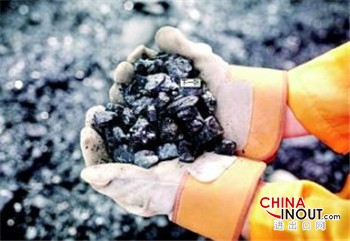据美国能源情报署(EIA)对中国最新发布数据的分析,本世纪中国的煤炭消费量被显著低估,这使气候变化谈判代表们在今年12月巴黎联合国气候大会前面临更多问题。
根据北京方面今年夏天发布的修正数据,EIA得出结论,在2000年到2013年间,全球最大的污染国和煤炭消费国燃烧的煤炭量高出之前报告的数值至多14%。该机构表示,这意味着中国的能源消费量和产量也要高得多。
EIA的分析与中国的增长情况相符:2013年之前的10年期间,中国经济高速增长,现在则缓慢得多。但这项分析也让气候变化谈判者赖以确定各国排放水平的计算陷入了混乱。今年12月的巴黎气候谈判将试图遏止这些排放,希望防止危险的全球变暖。
中国将国内生产总值(GDP)数据设定为政治目标,这种做法让中国的增长轨迹极为平顺,批评者称这掩盖了中国经济的真实周期。2000年至2013年间能源消费量更高,与其他一些表明中国经济在此期间比官方数据增长更快的指标吻合,包括高昂的大宗商品价格、煤矿业的繁荣以及私营煤矿和冶炼厂的大量出现。
类似的,达到目标的动机也可能掩盖当前经济放缓的程度。2014年中国报告煤炭产量下降,曾让绿色和平(Greenpeace)等许多环保主义者感到振奋,令人期待中国的排放量或许能够早于官方提出的目标——2030年之前见顶回落。
EIA的分析还得出一个结论,煤炭消费量的增长正在大幅放缓。该机构称,“根据能量含量来计算,2014年中国的煤炭消费量基本持平”,同期中国的煤炭产量下降了2.6%。
上个月,科学期刊《自然》(Nature)的一篇论文主张,因为对中国煤炭品质的假设有误,中国的碳排放量实际低于国际机构的估算结果。那篇论文的几名作者表示,即使假设中国使用了比官方统计数字多出10%的煤炭,中国的排放量依然被高估。
然而,EIA的分析所依据的修正后统计数据表明,通过燃烧煤炭所释放出的能量在2014年同比小幅上升,反映出随着煤炭降价淘汰了一些最低品质煤的供应商,高品质煤在能源结构中的比重有所提升。(中国进出口网)

China’s coal use this century has been significantly underestimated, according to analysis of new Chinese data by the US Energy Information Administration, adding to climate change negotiators’ problems ahead of December’s UN conference in Paris.
based on revised data released by Beijing this summer, the EIA has concluded that the world’s largest polluter and consumer of coal burnt up to 14 per cent more of the fossil fuel between 2000 and 2013 than previously reported. It said this meant China’s energy consumption and production were also much higher.
The EIA’s analysis squares with the supercharged economic growth of the decade before 2013 and much slower growth now but throws into confusion the calculations on which climate change negotiators rely to determine the level of emissions produced by each nation. Talks this December in Paris will attempt to rein in those emissions, in the hopes of preventing dangerous global warming.
The fact that China has made GDP figures a political target has resulted in a remarkably smooth growth path, which critics say obscures the real cycles in the Chinese economy. Higher energy consumption from 2000-2013 would tally with other indicators of an economy that grew more quickly than official figures over that period suggest, including high commodity prices, a boom in coal mining and the proliferation of private mines and smelters.
Similarly, the motivation to hit targets may mask the extent of the current economic slowdown. A reported dro in China’s coal output in 2014 has cheered environmentalists, including Greenpeace, and raised hopes that the country’s emissions might peak and begin to decline before the official target of 2030.
The EIA’s analysis also concluded that growth in coal use was slowing dramatically. “In 2014, energy-content-based coal consumption was essentially flat”, while coal production fell by 2.6 per cent, it said.
Last month a study in the journal Nature argued that Chinese emissions were actually lower than estimated by international institutes, because of incorrect assumptions about the quality of Chinese coal. The authors said emissions were overestimated despite assuming the country’s actual coal consumption was 10 per cent higher than Chinese government data showed.
However, the revised Chinese statistics on which the EIA’s analysis is based indicate that energy released through coal consumption edged up slightly in 2014 compared with 2013, reflecting a greater proportion of higher-quality coal in the mix as dropping prices cut out the lowest-quality suppliers.











